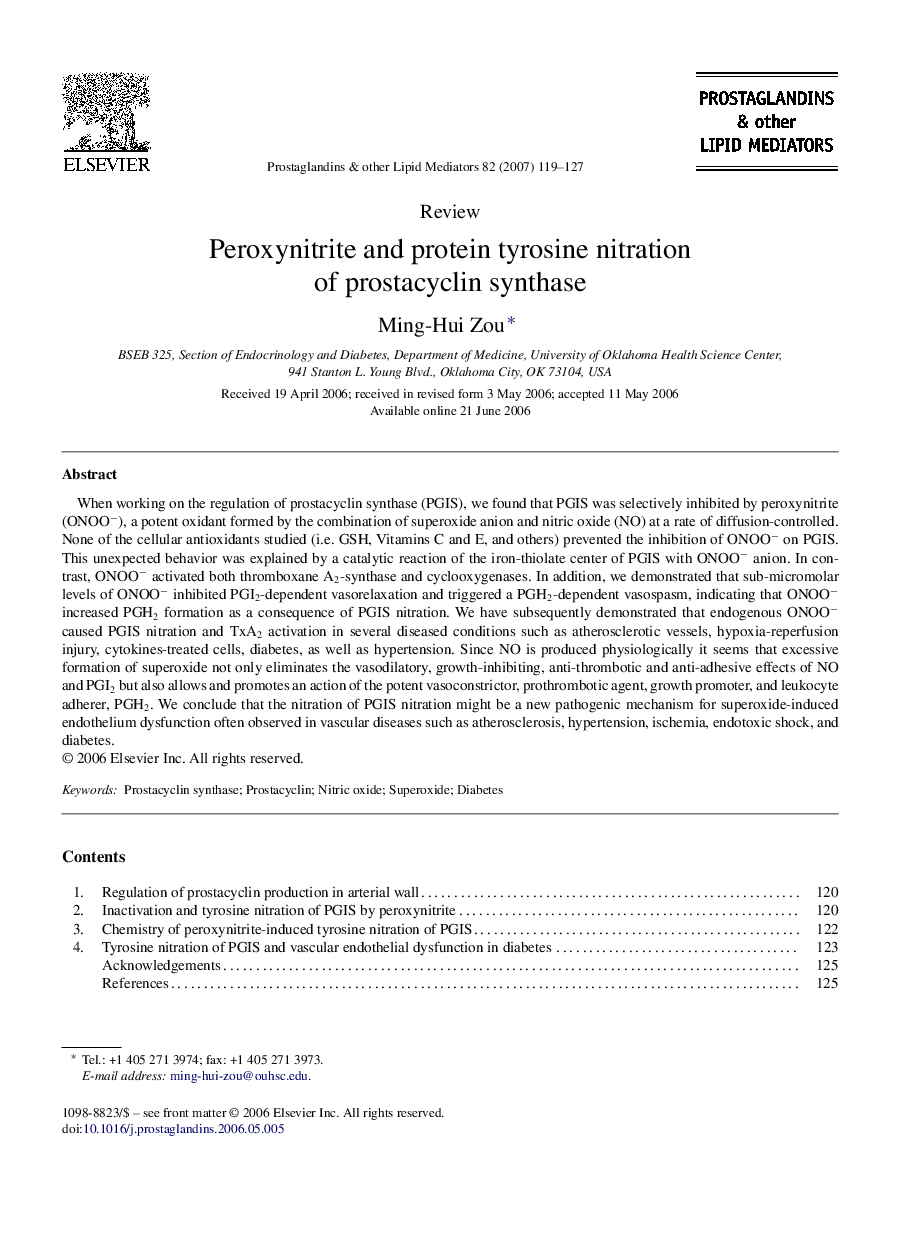| Article ID | Journal | Published Year | Pages | File Type |
|---|---|---|---|---|
| 2020095 | Prostaglandins & Other Lipid Mediators | 2007 | 9 Pages |
When working on the regulation of prostacyclin synthase (PGIS), we found that PGIS was selectively inhibited by peroxynitrite (ONOO−), a potent oxidant formed by the combination of superoxide anion and nitric oxide (NO) at a rate of diffusion-controlled. None of the cellular antioxidants studied (i.e. GSH, Vitamins C and E, and others) prevented the inhibition of ONOO− on PGIS. This unexpected behavior was explained by a catalytic reaction of the iron-thiolate center of PGIS with ONOO− anion. In contrast, ONOO− activated both thromboxane A2-synthase and cyclooxygenases. In addition, we demonstrated that sub-micromolar levels of ONOO− inhibited PGI2-dependent vasorelaxation and triggered a PGH2-dependent vasospasm, indicating that ONOO− increased PGH2 formation as a consequence of PGIS nitration. We have subsequently demonstrated that endogenous ONOO− caused PGIS nitration and TxA2 activation in several diseased conditions such as atherosclerotic vessels, hypoxia-reperfusion injury, cytokines-treated cells, diabetes, as well as hypertension. Since NO is produced physiologically it seems that excessive formation of superoxide not only eliminates the vasodilatory, growth-inhibiting, anti-thrombotic and anti-adhesive effects of NO and PGI2 but also allows and promotes an action of the potent vasoconstrictor, prothrombotic agent, growth promoter, and leukocyte adherer, PGH2. We conclude that the nitration of PGIS nitration might be a new pathogenic mechanism for superoxide-induced endothelium dysfunction often observed in vascular diseases such as atherosclerosis, hypertension, ischemia, endotoxic shock, and diabetes.
